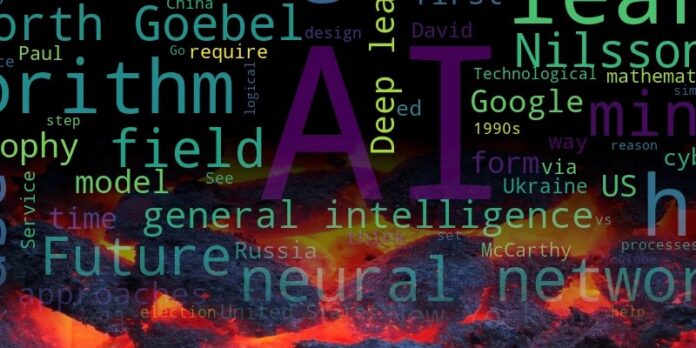Essay by Eric Worrall
The researchers claim “behavioural change” as a field where AI can help.
JUNE 23, 2025
AI Could Be Harnessed to Cut More Emissions Than It Creates
Power-hungry AI and associated data centers could make the grid cleaner, eventually cutting more climate-change-causing emissions than they produce
BY SARA SCHONHARDT & E&E NEWS
CLIMATEWIRE | Artificial intelligence could cut global climate pollution by up to 5.4 billion metric tons a year over the next decade if it’s harnessed in ways that would improve transportation, energy and food production.
…
“The key will be to channel practical AI applications towards key impact areas to accelerate the market adoption rate and efficiency of low-carbon solutions,” the study said, noting that governments will have a vital role to play.
“Governments must regulate AI to minimise their environmental footprint,” the study said, pointing to the need for energy efficient AI models and the use of renewable energy to power data centers.
…
The International Energy Agency projects that by 2030 data centers will consume twice as much electricity as they do today. Growing energy demands are already challenging the U.S. grid, and oil companies are using AI to find new areas to drill. BloombergNEF has said fossil fuels will provide most of the new power for data centers over the next decade, imperiling efforts to cut carbon pollution.
…
The study referenced by the Scientific American article;
Green and intelligent: the role of AI in the climate transition
npj Climate Action volume 4, Article number: 56 (2025) Cite this article
Abstract
Artificial Intelligence (AI) can play a powerful role in supporting climate action while boosting sustainable and inclusive economic growth. However, limited research exists on the potential influence of AI on the low-carbon transition. Here we identify five areas through which AI can help build an effective response to climate threats. We estimate the potential for greenhouse gas (GHG) emissions reductions through AI applications in three key sectors—power, food, and mobility—which collectively contribute nearly half of global emissions. This is compared with the increase in data centre-related emissions generated by all AI-related activities.
Read more: https://www.nature.com/articles/s44168-025-00252-3
One area where the researchers believe AI can help is “nudging and behaviour change”. From the study;
Nudging and behavioural change
Changes in lifestyle and consumer behaviour can reduce 40-70% of greenhouse gas emissions by 205013. Leveraging AI towards supporting more sustainable consumption patterns is important to enable a systemic shift. In the context of increasing global resource consumption (projected to go up 60% by 206023), optimisation of production will not be enough; demand must also adapt by promoting more sustainable lifestyles, conscious consumption and reducing overall environmental impact. However, despite growing awareness and willingness to act, consumers often struggle to identify the most climate-friendly options due to information asymmetry and inefficient market signals. Personalised recommendations can empower consumers to adopt low-carbon technologies by suggesting options that align with their needs while minimising their environmental impact.
The potential for AI to overcome psychological barriers and tailor interventions is also shown by examples in specific sectors. In the power sector, energy management is a key area where AI effectively drives sustainable consumer behaviour. Google’s Nest uses sensors, smart home systems, and AI-driven learning to optimise heating and cooling based on real-time weather and user preferences24. Similarly, Oracle’s Opower combines AI with behavioural science to nudge energy savings through customer engagement25. By channelling complex data into clear, personalised recommendations, it helps to overcome cognitive limitations that hinder pro-environmental behaviour. The potential of technologies of this type is huge, as lowering thermostats by just 1 degree could save UK households £670 million annually and reduce CO2 emissions by 3.5 million tonnes26. …
Read more: same study as above
This theme is reinforced in the “Modelling climate systems and policy interventions” section;
… AI models can also be applied to better design and implement policies for climate action, by generating insights and predictions around complex climate policy scenarios or monitoring the effectiveness of policy implementation. The Climate Policy Radar, for example, uses AI to create open-source tools that assist governments in designing best-practice climate policies based on evidence from thousands of case studies30. A recent study used Machine Learning to analyse roughly 1500 climate policies implemented between 1998 and 2022 across 41 countries, to identify those that were able to reduce carbon emissions most effectively31.
Furthermore, AI can also contribute to developing new economic models that include “Beyond GDP” metrics (for a comprehensive review see Jansen et al.32). Policymaking has long focused on economic growth as measured by gross domestic product (GDP), diverting attention from other societal goals, such as sustainability, personal well-being and equality. Thanks to the ability of processing large and diverse types of datasets and running complex modelling tools, AI can help integrate “Beyond GDP” metrics into current macro-economic models. This could facilitate policymakers in making informed decisions that are directed towards shaping a sustainable and inclusive future. …
Read more: same study as above
To be fair, the examples the researchers gave were positive, about Winnow Vision’s cameras helping commercial chefs to increase profits by reducing waste, and helping commuters find better routes to their destinations.
AI has the potential to help as much as it hinders regard to personal freedom – AI powered research tools could penetrate the fog of lies and help provide access to reliable information. This freedom AI concept at least has the potential to preserve the current status quo, if not improve consumer knowledge.
Of course, the central premise of the study, that AI has the potential to reduce emissions, seems utterly nonsensical given all the power plants which are springing up in response to the AI boom. If AI was reducing emissions, why would we need all the new power plants? Let me know when the power plant boom starts fizzling out, and we can re-evaluate whether AI is reducing the need for energy consumption faster than new AI data warehouses drive up demand for power.
Related
Discover more from Watts Up With That?
Subscribe to get the latest posts sent to your email.



